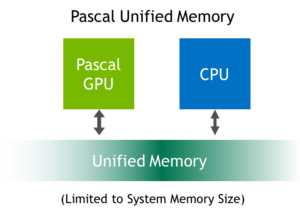This month with the release of AMD ROCm v1.4 we also had a taste of the preview version of the OpenCL runtime on ROCm. For anyone curious about it here is the clinfo output on an AMD R9-Nano GPU (external URL on gist):
Number of platforms: 1
Platform Profile: FULL_PROFILE
Platform Version: OpenCL 2.0 AMD-APP (2300.5)
Platform Name: AMD Accelerated Parallel Processing
Platform Vendor: Advanced Micro Devices, Inc.
Platform Extensions: cl_khr_icd cl_amd_event_callback cl_amd_offline_devices
Platform Name: AMD Accelerated Parallel Processing
Number of devices: 1
Device Type: CL_DEVICE_TYPE_GPU
Vendor ID: 1002h
Board name: Fiji [Radeon R9 FURY / NANO Series]
Device Topology: PCI[ B#1, D#0, F#0 ]
Max compute units: 64
Max work items dimensions: 3
Max work items[0]: 1024
Max work items[1]: 1024
Max work items[2]: 1024
Max work group size: 256
Preferred vector width char: 4
Preferred vector width short: 2
Preferred vector width int: 1
Preferred vector width long: 1
Preferred vector width float: 1
Preferred vector width double: 1
Native vector width char: 4
Native vector width short: 2
Native vector width int: 1
Native vector width long: 1
Native vector width float: 1
Native vector width double: 1
Max clock frequency: 1000Mhz
Address bits: 64
Max memory allocation: 3221225472
Image support: Yes
Max number of images read arguments: 128
Max number of images write arguments: 8
Max image 2D width: 16384
Max image 2D height: 16384
Max image 3D width: 2048
Max image 3D height: 2048
Max image 3D depth: 2048
Max samplers within kernel: 29440
Max size of kernel argument: 1024
Alignment (bits) of base address: 1024
Minimum alignment (bytes) for any datatype: 128
Single precision floating point capability
Denorms: No
Quiet NaNs: Yes
Round to nearest even: Yes
Round to zero: Yes
Round to +ve and infinity: Yes
IEEE754-2008 fused multiply-add: Yes
Cache type: Read/Write
Cache line size: 64
Cache size: 16384
Global memory size: 4294967296
Constant buffer size: 3221225472
Max number of constant args: 8
Local memory type: Scratchpad
Local memory size: 65536
Max pipe arguments: 0
Max pipe active reservations: 0
Max pipe packet size: 0
Max global variable size: 3221225472
Max global variable preferred total size: 4294967296
Max read/write image args: 64
Max on device events: 0
Queue on device max size: 0
Max on device queues: 0
Queue on device preferred size: 0
SVM capabilities:
Coarse grain buffer: Yes
Fine grain buffer: Yes
Fine grain system: No
Atomics: No
Preferred platform atomic alignment: 0
Preferred global atomic alignment: 0
Preferred local atomic alignment: 0
Kernel Preferred work group size multiple: 64
Error correction support: 0
Unified memory for Host and Device: 0
Profiling timer resolution: 1
Device endianess: Little
Available: Yes
Compiler available: Yes
Execution capabilities:
Execute OpenCL kernels: Yes
Execute native function: No
Queue on Host properties:
Out-of-Order: No
Profiling : Yes
Queue on Device properties:
Out-of-Order: No
Profiling : No
Platform ID: 0x7f7273868198
Name: gfx803
Vendor: Advanced Micro Devices, Inc.
Device OpenCL C version: OpenCL C 2.0
Driver version: 1.1 (HSA,LC)
Profile: FULL_PROFILE
Version: OpenCL 1.2
Extensions: cl_khr_fp64 cl_khr_global_int32_base_atomics cl_khr_global_int32_extended_atomics cl_khr_local_int32_base_atomics cl_khr_local_int32_extended_atomics cl_khr_int64_base_atomics cl_khr_int64_extended_atomics cl_khr_3d_image_writes cl_khr_byte_addressable_store cl_khr_gl_sharing cl_amd_media_ops cl_amd_media_ops2 cl_khr_subgroups cl_khr_depth_images




